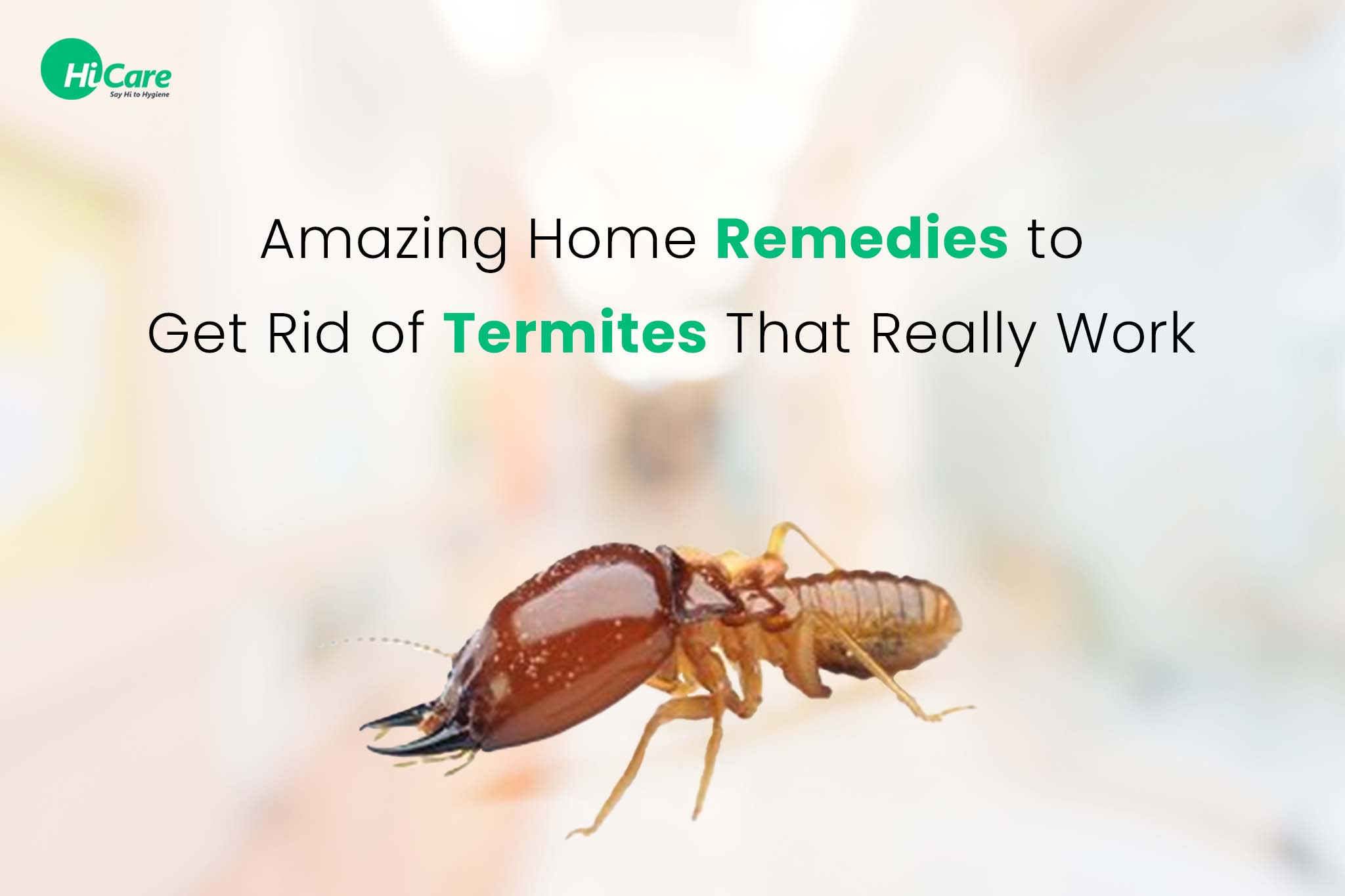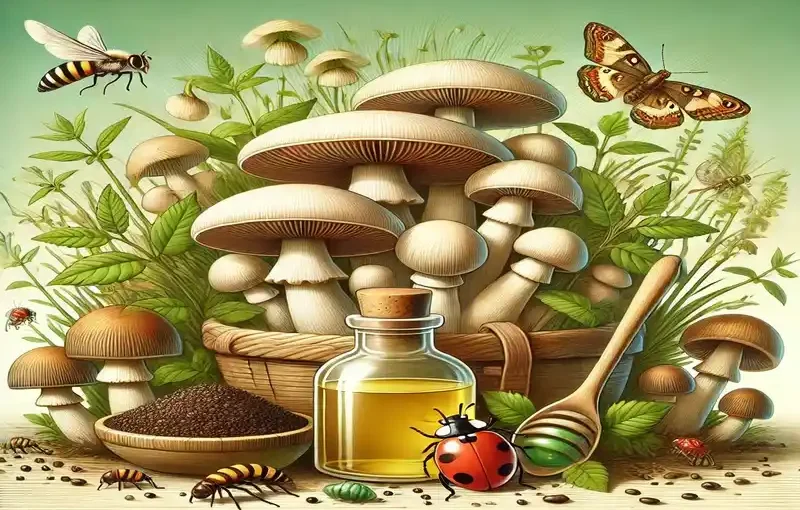Natural remedies like neem oil and diatomaceous earth can effectively treat pest infestations in mushrooms. These methods are safe and environmentally friendly.
Mushrooms are a delicate crop that can be highly susceptible to pest infestations. Using chemical pesticides can harm both the mushrooms and the environment. Natural remedies provide an effective alternative for managing pests without these negative impacts. Neem oil disrupts the life cycle of pests, while diatomaceous earth physically damages their exoskeletons.
These solutions are easy to apply and can be integrated into regular mushroom farming practices. By opting for natural remedies, growers can protect their crop while promoting sustainable farming techniques. This approach ensures healthier mushrooms and a safer environment.

Credit: hicare.in
Introduction To Natural Remedies
Mushroom growers often face challenges with pest infestations. Using chemical pesticides can harm both the mushrooms and the environment. Natural remedies offer a safer and eco-friendly solution.
Importance Of Organic Solutions
Organic solutions are crucial for maintaining the health of mushrooms. These solutions are free of harmful chemicals. They also protect the soil and surrounding plants.
Using natural remedies ensures that mushrooms are safe to eat. It also supports sustainable farming practices. Organic solutions are better for the planet.
Common Mushroom Pests
Several pests can infest mushroom crops. Knowing these pests helps in choosing the right remedy.
| Pest | Description | Natural Remedy |
|---|---|---|
| Mushroom Flies | Small flies that lay eggs in the substrate. | Use sticky traps to catch adult flies. |
| Mites | Small insects that feed on mushroom mycelium. | Introduce predatory mites to control the population. |
| Springtails | Tiny insects that eat mushroom spores. | Maintain dry conditions to prevent springtail infestation. |
Preventing these pests is easier with natural remedies. It keeps mushrooms healthy and free from chemicals.
-
- Mushroom Flies: Use sticky traps to catch adult flies.
- Mites: Introduce predatory mites to control the population.
- Springtails: Maintain dry conditions to prevent springtail infestation.
These natural methods are effective and safe. They ensure a healthy mushroom crop.
Identifying Common Mushroom Pests
Natural remedies can help manage mushroom pests. To use them effectively, you must identify the pests. Below are some of the common pests that infest mushrooms.
Fungal Gnats
Fungal gnats are small, dark insects. They live in moist mushroom beds. These pests lay eggs in the soil. The larvae feed on mushroom roots. This can harm the mushrooms.
| Characteristic | Description |
|---|---|
| Size | 2-4 mm |
| Color | Dark, often black |
| Habitat | Moist mushroom beds |
| Damage | Larvae feed on roots |
Mites
Mites are tiny arachnids. They often infest mushroom crops. Mites can be hard to see with the naked eye. They cause damage by feeding on mushrooms. This can lead to poor growth and lower yields.
-
- Size: Less than 1 mm
- Color: Varies, often white or red
- Habitat: Mushroom beds and compost
- Damage: Feeding on mushroom tissue
Springtails
Springtails are small, wingless insects. They thrive in damp environments. Springtails often feed on fungi and decaying matter. While they do not cause major damage, they can spread diseases.
-
- Size: 1-2 mm
- Color: White, gray, or black
- Habitat: Damp mushroom beds
- Damage: Feeding on fungi, spreading diseases
Preventative Measures
Preventing pest infestations in mushrooms is easier than treating them. By taking preventive actions, you can keep your mushroom farm healthy. This section covers key steps to stop pests before they start.
Sanitation Practices
Cleanliness is vital for a pest-free mushroom farm. Follow these simple sanitation practices:
-
- Wash all tools before use.
- Remove old mushroom debris.
- Disinfect growing areas regularly.
- Keep the area free from standing water.
- Dispose of infected mushrooms properly.
These practices reduce the chances of pest problems. Clean tools and areas make it harder for pests to survive.
Proper Ventilation
Good air circulation prevents many issues. Ensure your growing area has proper ventilation:
-
- Install fans to keep the air moving.
- Open windows or vents for fresh air.
- Avoid overcrowding the growing area.
- Regularly check and clean air filters.
Proper ventilation helps maintain a healthy environment for mushrooms. It also makes it difficult for pests to thrive.
Moisture Control
Controlling moisture levels is crucial. Too much moisture can lead to pests. Follow these moisture control tips:
-
- Use a hygrometer to monitor humidity.
- Keep humidity levels between 85% and 90%.
- Water your mushrooms carefully.
- Avoid water pooling in the growing area.
By managing moisture, you reduce the risk of pests. Mushrooms need the right balance of humidity to grow well.

Credit: www.amazon.com
Neem Oil Solutions
Neem oil is a natural remedy for pest infestations in mushrooms. It is derived from the seeds of the neem tree. Neem oil has been used for centuries for its pest-repellent properties. It can be a safe and effective solution for protecting mushroom crops from pests.
Application Methods
Applying neem oil to mushrooms involves a few simple steps. Here are the common methods:
-
- Foliar Spray: Mix neem oil with water. Use a spray bottle to apply directly onto mushroom caps and stems.
- Soil Drench: Combine neem oil with water. Pour it into the soil around the mushroom base.
- Cold Pressed Neem Oil: Use pure cold-pressed neem oil. Apply it using a dropper for precise application.
Effectiveness Against Pests
Neem oil is effective against a variety of pests. It disrupts the life cycle of insects. Here are the pests neem oil targets:
| Pest Type | Effectiveness |
|---|---|
| Aphids | High |
| Spider Mites | Moderate |
| Whiteflies | High |
| Fungus Gnats | Moderate |
Neem oil works by interfering with insect hormones. It prevents pests from eating and growing. This makes it a powerful tool in organic mushroom farming.
Diatomaceous Earth
Diatomaceous earth is a natural remedy for pest control in mushrooms. It is a powder made from fossilized algae. This remedy helps keep pests away without using chemicals.
How It Works
Diatomaceous earth works by dehydrating insects. The powder has tiny sharp edges. These edges cut the exoskeleton of pests. This causes them to dry out and die. It is safe for humans and pets. The powder does not harm the mushrooms.
Application Tips
To use diatomaceous earth, follow these steps:
-
- Wear a mask to avoid breathing in the powder.
- Sprinkle a thin layer over the mushroom bed.
- Apply it evenly, covering all areas.
- Reapply after watering or rain.
Here are some tips for best results:
-
- Use food-grade diatomaceous earth.
- Store the powder in a dry place.
- Check for pests regularly.
- Repeat the application if needed.
Diatomaceous earth is an effective way to keep your mushrooms pest-free. It is easy to use and safe. Try this natural remedy for a healthy mushroom harvest.
Beneficial Insects
Using beneficial insects in mushroom farming can help control pest infestations naturally. These insects act as predators to harmful pests. They help maintain a balanced ecosystem. Below, we’ll explore two effective types of beneficial insects: predatory mites and nematodes.
Introducing Predatory Mites
Predatory mites are tiny insects that feed on harmful pests. They can be a great ally in controlling mushroom pests. Predatory mites are particularly effective against spider mites and fungus gnats.
Here are some benefits of using predatory mites:
-
- They are natural predators.
- They do not harm mushrooms.
- They reduce the need for chemical pesticides.
To introduce predatory mites:
-
- Purchase them from a reliable supplier.
- Release them in your mushroom growing area.
- Monitor their activity to ensure they are effective.
Using Nematodes
Nematodes are microscopic worms that can help control pests. They target larvae of insects like fungus gnats and thrips. Nematodes are easy to apply and very effective.
Here are some steps to use nematodes:
-
- Buy nematodes from a trusted source.
- Mix them with water as per instructions.
- Apply the mixture to the soil around your mushrooms.
Benefits of using nematodes include:
-
- They target the larvae stage of pests.
- They are safe for mushrooms.
- They are environmentally friendly.
Using beneficial insects like predatory mites and nematodes can greatly improve pest management. They offer a safe and natural alternative to chemical pesticides. Your mushroom crops will thrive in a balanced ecosystem.
Homemade Remedies
Natural remedies can keep your mushrooms healthy. These remedies use ingredients from your kitchen. They are safe and effective. Below are some easy-to-make solutions.
Garlic Spray
Garlic is a powerful pest repellent. It is safe for mushrooms.-
- Crush 10 garlic cloves.
- Mix with 1 liter of water.
- Let it sit for 24 hours.
- Strain the mixture.
- Add a few drops of liquid soap.
- Spray on mushroom beds.
Chili Pepper Solutions
Chili pepper is another strong pest deterrent. It works well for mushrooms.-
- Blend 3-4 chili peppers with 1 liter of water.
- Strain the mixture.
- Add a few drops of dish soap.
- Spray the solution on mushroom beds.

Credit: www.mdpi.com
Monitoring And Maintenance
Effective monitoring and maintenance are essential for controlling pest infestations in mushrooms. Regular checks and adjustments can help maintain a healthy growth environment. This section will explore key practices for monitoring and maintaining your mushroom crops.
Regular Inspections
Conducting regular inspections of your mushroom crops is crucial. Look for signs of pests like discoloration or holes in mushroom caps. Use a magnifying glass to spot small insects and larvae. Create a schedule to inspect your mushrooms at least twice a week.
-
- Check the humidity levels and ensure they are optimal.
- Look for any signs of contamination or mold growth.
- Use sticky traps to monitor flying insects.
- Keep a log of all observations and actions taken.
Adjusting Techniques
Adjusting your cultivation techniques can help reduce pests. Natural remedies are effective and safe for the environment.
-
- Use neem oil sprays to deter insects.
- Introduce beneficial insects like ladybugs to control pests.
- Maintain proper ventilation to reduce humidity and mold.
- Implement crop rotation to prevent pest build-up.
Monitoring and maintaining your mushroom crops can be simple. Regular inspections and adjusting techniques ensure a healthy yield.
Frequently Asked Questions
How To Get Rid Of Bugs In Mushrooms?
Rinse mushrooms under cold water. Gently scrub with a soft brush to remove bugs. Dry thoroughly before cooking.
What Is The Most Powerful Natural Insecticide?
Neem oil is the most powerful natural insecticide. It effectively controls pests and is safe for humans and pets.
How Do You Get Rid Of Plant Diseases Naturally?
Use neem oil, garlic spray, or baking soda solution. Remove infected leaves. Ensure proper plant spacing and sunlight. Rotate crops regularly. Maintain healthy soil with compost.
How To Make A Homemade Insecticide For Plants?
Mix 1 tablespoon of dish soap with 1 liter of water. Spray on plants to kill insects. Use weekly.
What Are Natural Remedies For Mushroom Pests?
Neem oil, diatomaceous earth, and garlic spray are effective natural remedies for controlling mushroom pests.
Conclusion
Natural remedies offer effective solutions for mushroom pest infestations. These methods are eco-friendly and cost-efficient. By using natural treatments, you protect both your mushrooms and the environment.
Give these natural remedies a try to maintain healthy mushroom crops. Sustainable pest control ensures long-term success for your mushroom cultivation.
